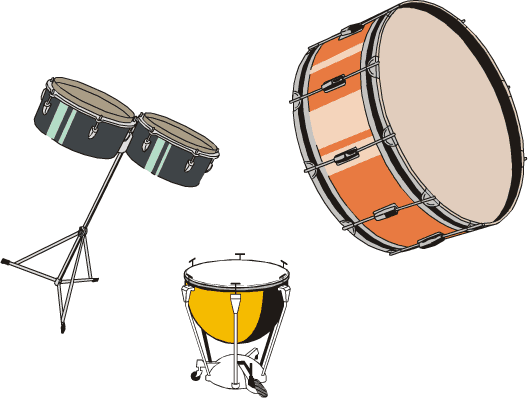How Percussion Instruments Work

Percussion instruments are the simplest, and most primitive musical instruments. The easiest definition of a percussion instrument is something that produces a sound through being struck. Percussion instruments are usually rythm or accent instruments, although instruments like bells, xylophone, or glockenspiel can play melodies. Since they are so simple, percussion instuments are extremely varied - from symbols and maracas to normal drums and vibraphones. A symphony orchestra usually has many different percussion instruments for each piece played.
Making Sound
Percussion instruments make sound by being hit. Drums have a hollow body that amplifies the noise of a stretched membrane being hit. Some instruments are shaken, like the maracas. Others resonate when hit, like bells. Yet others, like cymbals, just plain make a noise when they're hit. Percussion instruments can even be odd things like ratchets or castanets.
Playing Different Notes
While different notes are not usually played on percussion instruments, drums are usually tuned to a specific note. They are tuned by tightening or loosening the head of the drum. The tighter the drum, the higher the note. Some drums are also arranged so different pitches can be played. The larger the drum, the lower the pitch. You can try this out with the four tom-toms below. Just click a drum to hear it. Note that bigger drums are lower than smaller ones.
